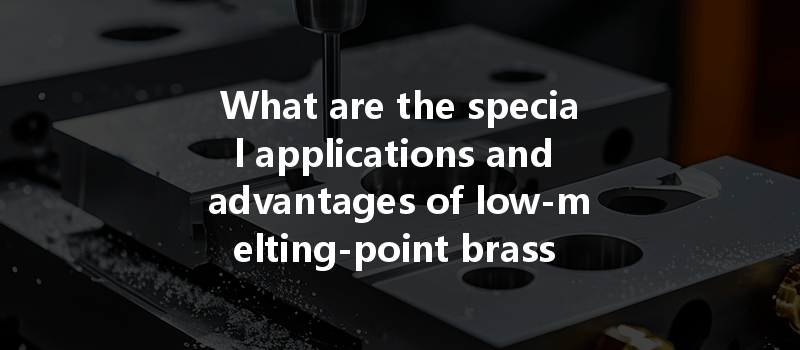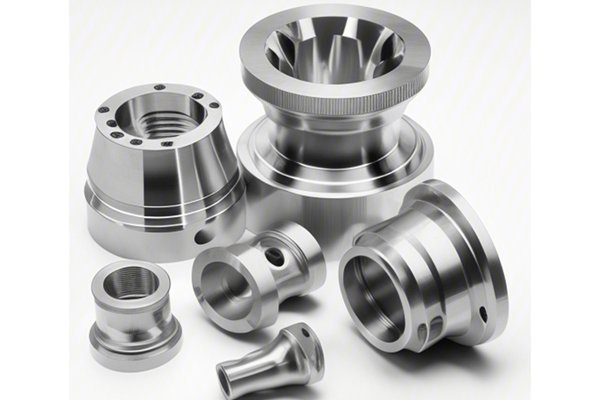Opening:
Did you know that low-melting-point brass can significantly enhance the efficiency and precision of CNC machining processes? With a melting point as low as 900°C (1652°F), low-melting-point brass materials stand out for their remarkable workability and versatility in manufacturing applications. As industries strive for innovation, understanding the advantages and unique applications of these materials becomes crucial to staying competitive.
In this comprehensive blog, we’ll delve into the special applications and benefits of low-melting-point brass in CNC machining, showcasing how leveraging this metal can lead to improved production efficiency and product quality across various sectors.
Understanding Low-Melting-Point Brass
Low-melting-point brass is an alloy primarily composed of zinc and copper, with varying proportions that influence its mechanical and thermal properties. Unlike conventional brass, which generally contains a high amount of zinc and is utilized for its hardness and corrosion resistance, low-melting-point brass offers a distinct advantage concerning melting characteristics. This unique composition makes it ideal for applications where ease of machining and intricate designs are paramount.
Composition and Properties
Key Properties
Special Applications of Low-Melting-Point Brass in CNC Machining
Low-melting-point brass materials have found widespread applications across several industries, including automotive, aerospace, electronics, and plumbing. Here are some special applications where their use in CNC machining has proven to be highly beneficial:
Low-melting-point brass is often used in the manufacturing of electrical connectors and terminals due to its excellent conductivity properties. CNC machining allows for the creation of highly precise parts, ensuring a perfect fit in electrical assemblies. Additionally, the ability to easily plate these components with layers of gold further enhances their conductivity and corrosion resistance.
The low-melting-point brass provides reliable performance in making valves and fittings for fluid and gas control systems. CNC machining techniques enable manufacturers to produce intricate designs that meet the specific flow rates and pressure requirements of various applications. The combination of precise engineering and durability ensures that the components maintain their integrity within complex systems.
Many decorative applications, such as knobs, handles, and various fixtures, benefit from the attractive aesthetic qualities of low-melting-point brass. CNC machining enables intricate designs while minimizing waste materials. The alloy’s ability to be easily plated or coated further enhances its usability in this realm, allowing for aesthetic versatility in design.
Low-melting-point brass is increasingly used in the automotive sector for parts like bushings, brackets, and specialized fittings due to its lightweight and machinability. In the quest for lightweight vehicles to improve fuel efficiency, low-melting-point brass plays a key role in developing components that retain strength while being lighter than traditional materials.
Within industries that require high-precision instrumentation, low-melting-point brass emerges as a suitable choice. CNC machining allows for the production of finely calibrated measurement devices and fittings, ensuring exact specifications and enhanced performance. The resistance to thermal deformation gives these instruments reliable functionality over an extended operational life.

Advantages of Using Low-Melting-Point Brass in CNC Machining
Integrating low-melting-point brass into CNC machining processes yields several advantages. Let’s explore these benefits in detail:
CNC machining with low-melting-point brass often leads to enhanced efficiency. The material’s ductility simplifies shaping and cutting, resulting in reduced machine time. Consequently, manufacturers can meet tight deadlines while maintaining product quality.
The lower melting point and machinability allow for tighter tolerances, resulting in better surface finishes. This is particularly vital in applications like automotive components and decorative hardware, where aesthetics and functionality go hand in hand.
Manufacturing components from low-melting-point brass reduces tooling costs due to less wear and tear on cutting tools. The efficiency of CNC machining means that fewer machine hours are required, directly impacting the bottom line.
Low-melting-point brass is suitable for a broad range of unique and complex designs. The flexibility of both the material and the machining process allows for rapid prototyping, encouraging creativity and innovation in product designs while retaining the practical aspects of manufacturability.
The recycling potential of brass significantly contributes to sustainability efforts. Low-melting-point brass can be easily repurposed and recycled without losing its essential properties, aligning with modern industries’ environmentally-friendly practices.
Key Considerations When Working with Low-Melting-Point Brass
While low-melting-point brass materials have significant advantages, certain considerations should be addressed to maximize their potential during CNC machining processes:
Choosing the right tool material and geometry is crucial in CNC machining of low-melting-point brass. Using tools specifically designed for non-ferrous materials ensures efficient machining, prolongs tool life, and maintains production quality.
Determining appropriate cutting speeds, feed rates, and depths is vital for achieving optimal results. Lower cutting speeds may be necessary to control heat generation, as excessive heat can result in minor deformation of the material.
Utilizing suitable cutting fluids can greatly reduce friction, dissipate heat, and improve surface finishes during the machining process. Appropriate coolant selection also contributes to tool longevity.
It’s important to consider post-machining processes when working with low-melting-point brass. Processes such as anodizing, plating, and polishing can enhance the properties of the finished products and ensure their performance in end-use applications.
In summary, low-melting-point brass materials provide an array of advantages when utilized in CNC machining processes. From their excellent machinability and aesthetic versatility to their diverse applications across critical industries, these materials are invaluable for manufacturers seeking to innovate and optimize production. Moreover, the sustainability aspect of low-melting-point brass contributes to an environmentally-friendly manufacturing model in today’s world.
As industries continue to evolve, understanding the benefits and applications of low-melting-point brass is essential for keeping pace with future developments. With the right approaches and considerations, manufacturers can leverage low-melting-point brass to achieve efficiency, cost-effectiveness, and improved product quality, making it a material worth exploring in modern CNC machining practices.
Remember, in a world where technology and innovation go hand in hand, the materials we choose to work with play a pivotal role in determining the success of our manufacturing processes.






